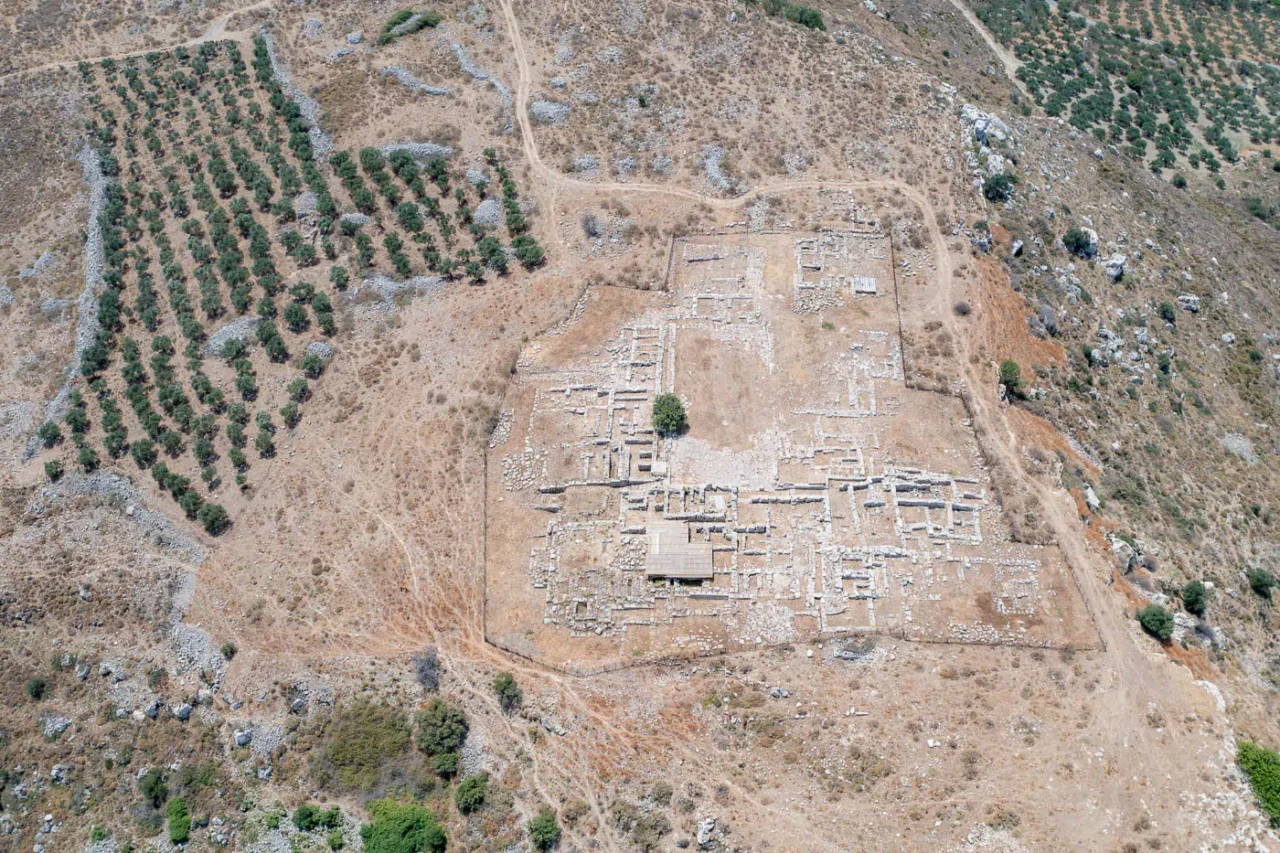
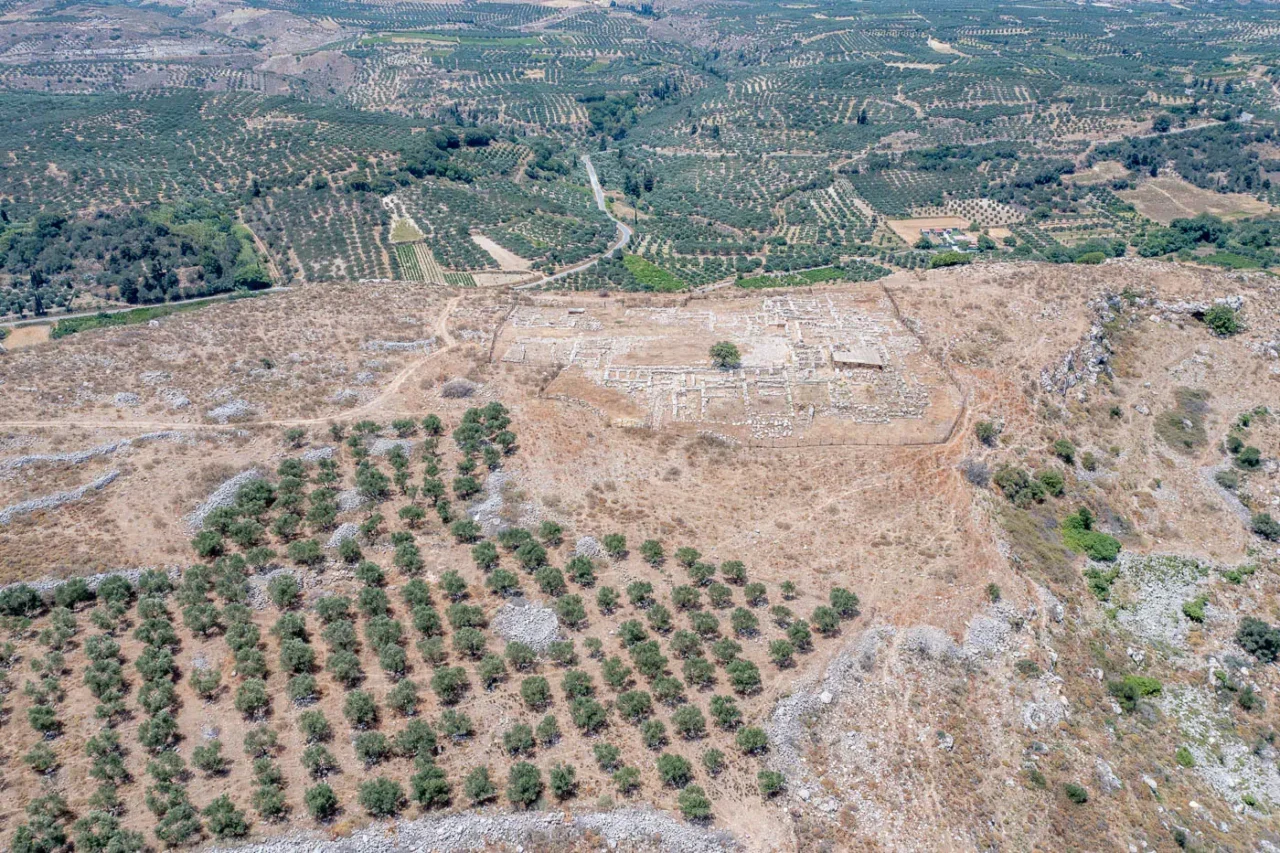
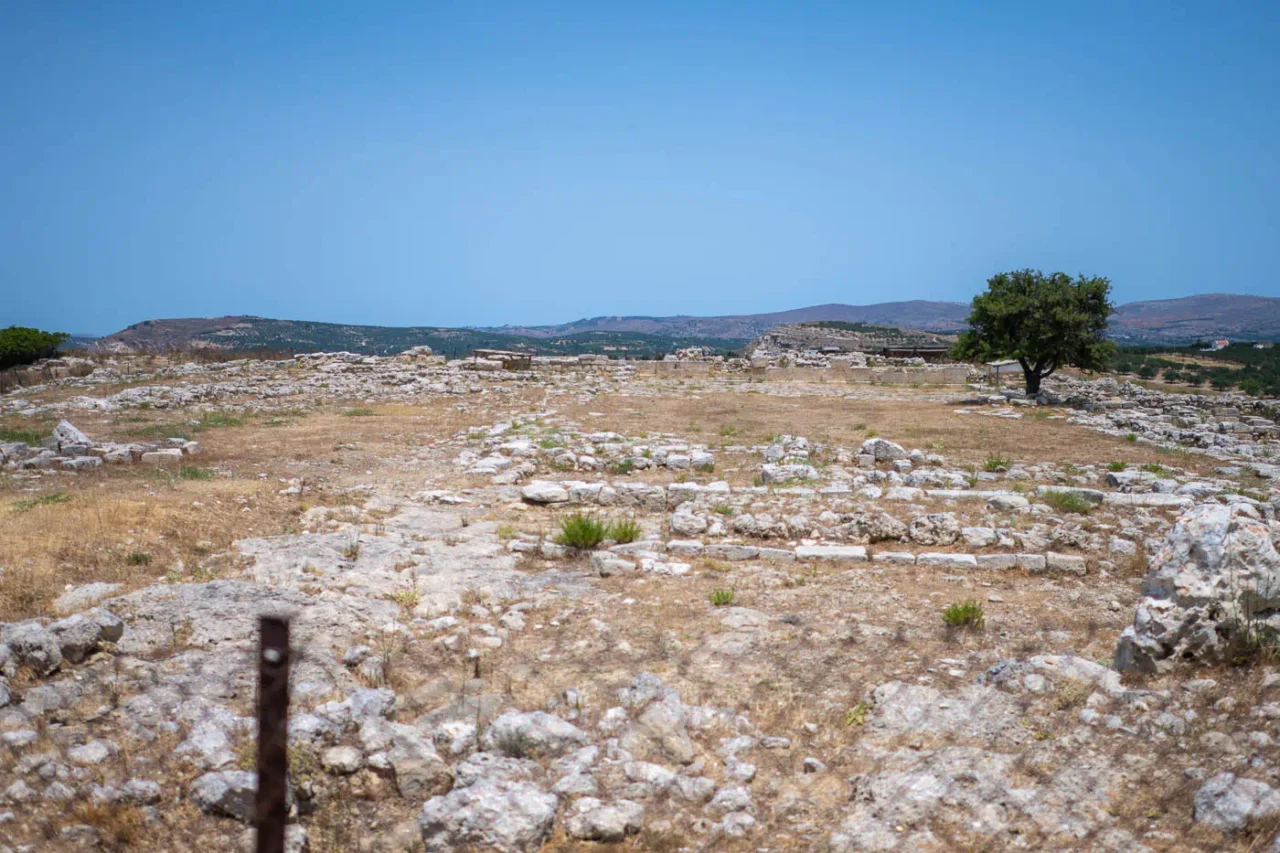
The Minoan palace at Galatas, situated in central Crete’s Pediada region, offers a unique lens into the sociopolitical landscape of the Neopalatial period (c. 1700-1600 BC). Unlike other Minoan palaces such as Knossos, Malia, and Phaistos, which underwent multiple construction phases, Galatas was built in a single phase. This single-phase construction provides archaeologists with a clearer understanding of its original architectural design and intent, making it a valuable resource for studying Minoan palatial architecture and sociopolitical organization.
Galatas in Context: A Unique Perspective on Minoan Palaces
The discovery and excavation of the Galatas palace in the early 1990s marked a significant advancement in Minoan archaeology. The palace’s unique construction history, characterized by a single building phase, sets it apart from other Minoan palaces that underwent multiple renovations and expansions over time. This distinction allows researchers to examine the original architectural plan and its associated meanings without the complexities introduced by later modifications.
Architectural Features and Knossian Influence
The palace at Galatas, like other Minoan palaces, is organized around a large central courtyard, a hallmark of Minoan palatial architecture. The East Wing, the best-preserved section, reveals areas dedicated to cooking, feasting, storage, and possibly ceremonial activities. The presence of numerous vessels for food preparation and consumption, along with evidence of large-scale grain processing, suggests that communal activities were central to the palace’s functions.
The architectural features of Galatas, particularly the use of ashlar masonry and fragments of wall paintings reminiscent of Knossian styles, hint at a close relationship between the two cities. This connection is further underscored by the discovery of mason’s marks similar to those found at Knossos, suggesting the involvement of Knossian craftsmen in the construction of Galatas. The opulence of the palace is evident in its use of high-quality materials like gypsum for door jambs and pillar bases, as well as the presence of elaborate paved floors.
The North Wing: Power and Hierarchy
The North Wing, with its impressive facade overlooking the central court, likely housed the administrative and residential quarters for palace officials. The wing’s design, featuring restricted access and carefully controlled lines of sight, suggests a hierarchical social structure where certain individuals or groups held privileged positions. The use of fine white plaster on floors and red plaster on staircases further emphasizes the wing’s importance and the elevated status of its occupants.
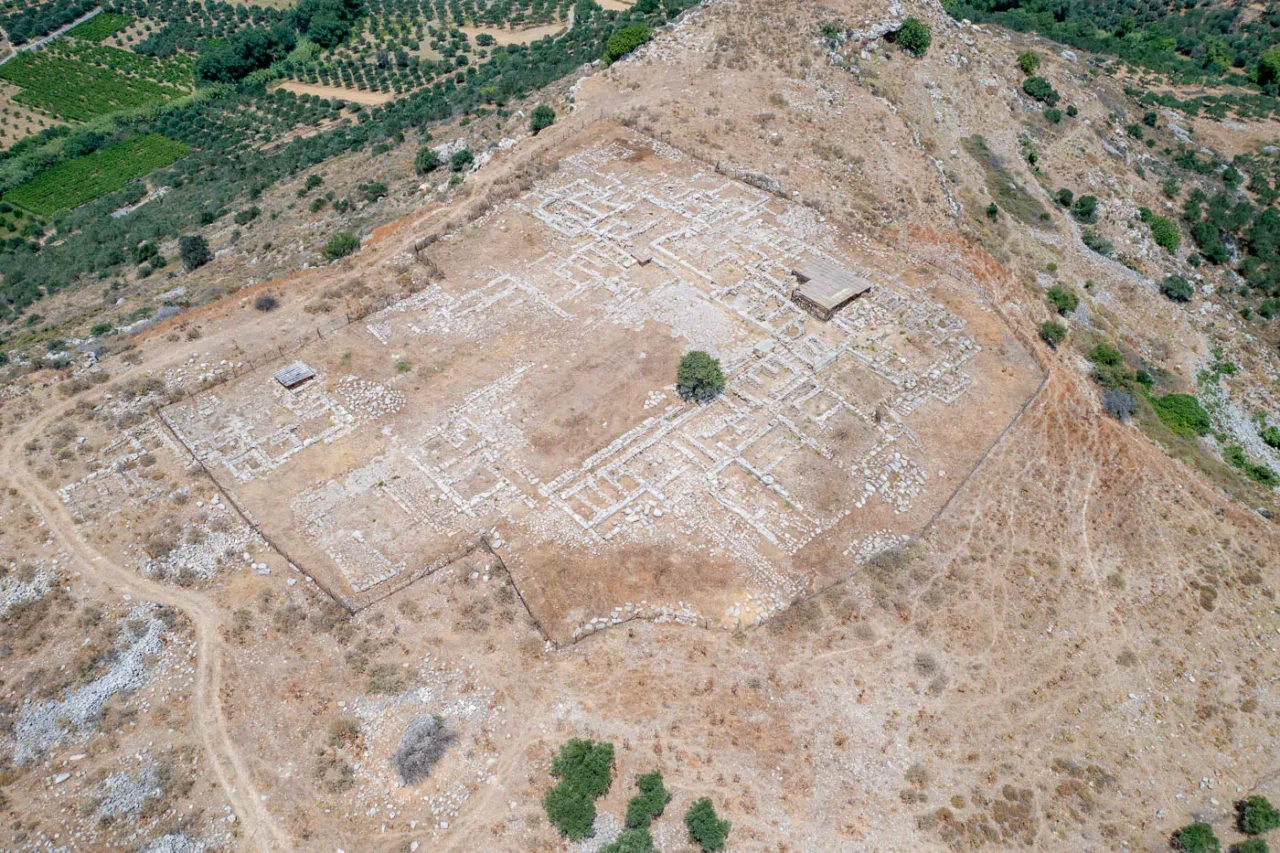
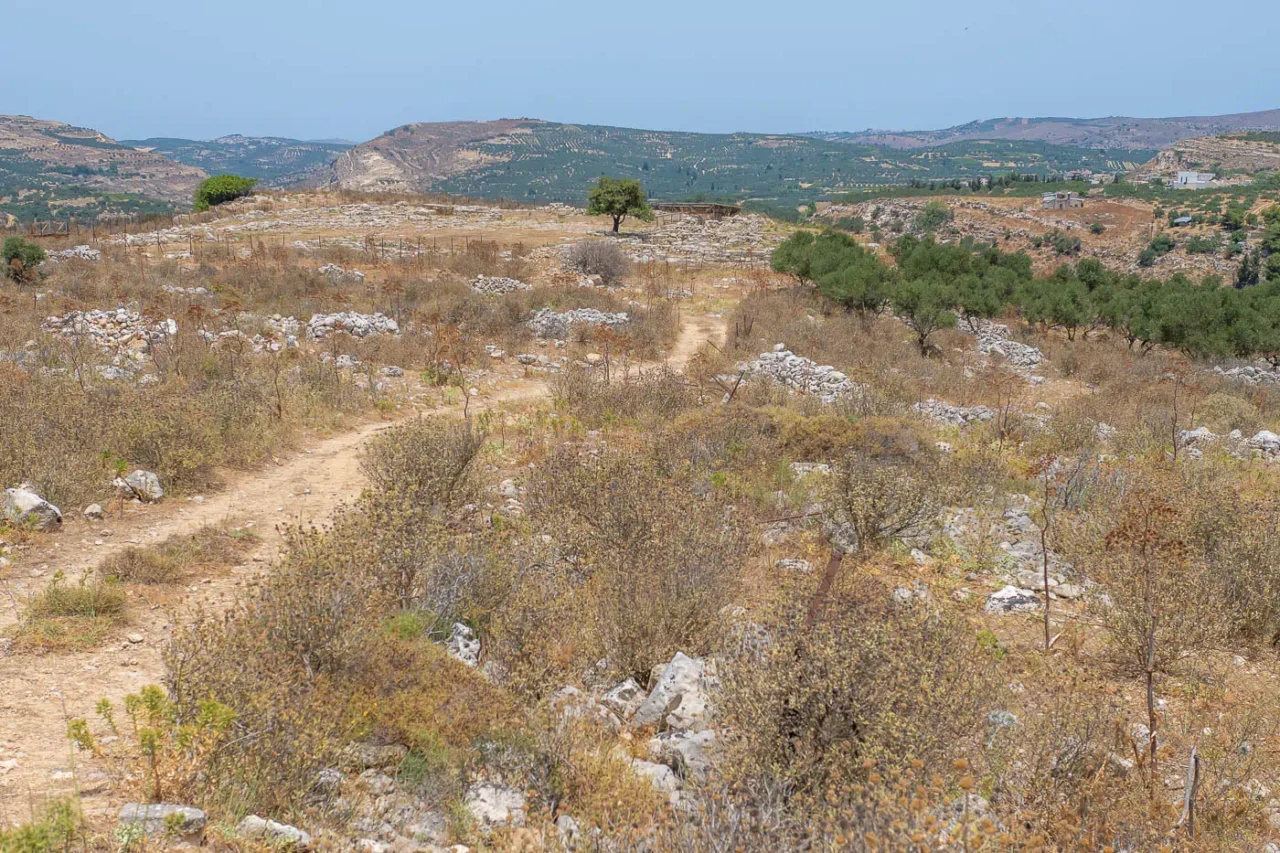
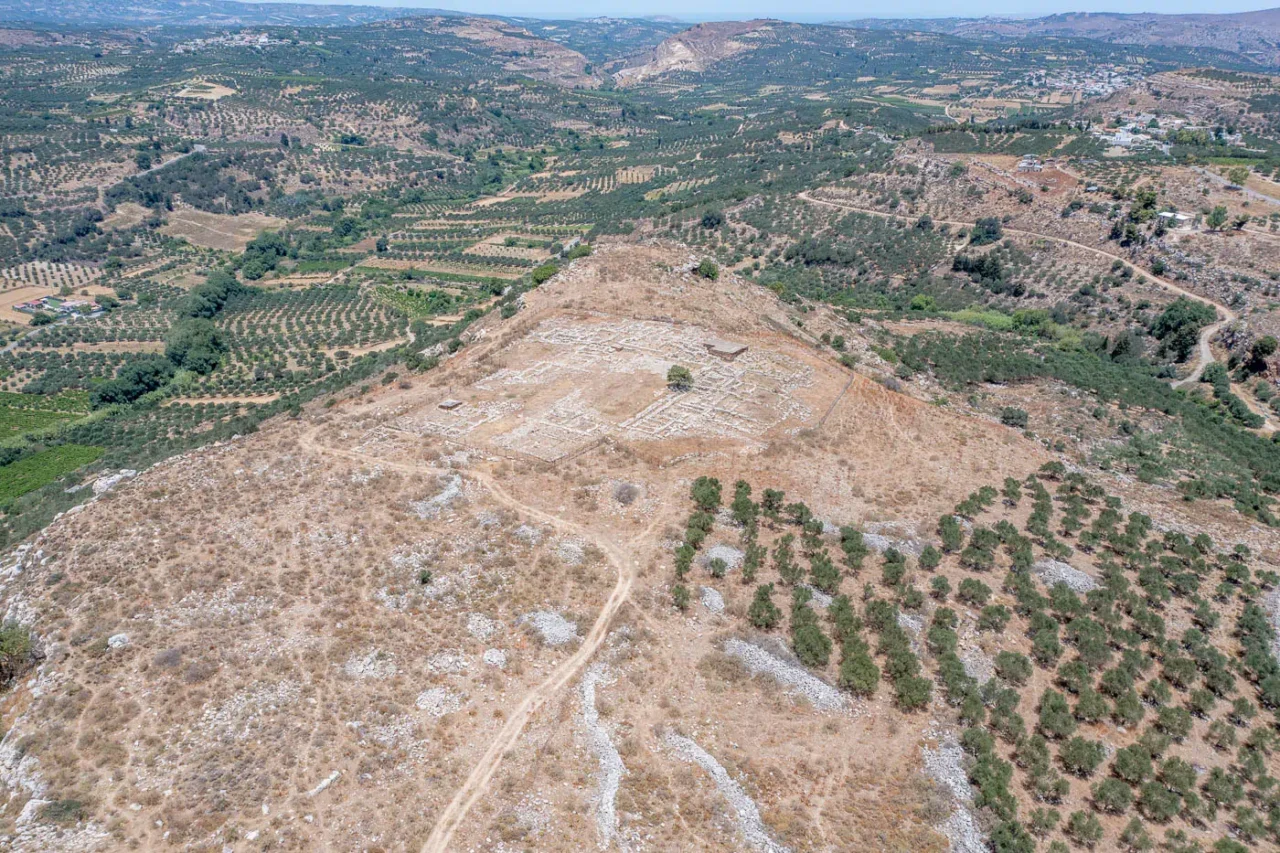
A Thriving Minoan Town
While the palace itself dates to the New Palace period, evidence suggests that a thriving town existed on the hillside during the Old Palace period. A building in the West Wing of the later palace revealed signs of centrally controlled activities, such as large-scale grain grinding and ceremonial feasting. The presence of artifacts from Knossos and Phaistos, along with part of an ivory sword handle, suggests that a high-ranking individual either resided in the building or oversaw its operations.
Feasting and Social Gatherings
The East Wing of the palace, particularly the Pillar Hall (room 17) and the Column Hall (room 14), appears to have been designed for ceremonial feasting and social gatherings. The presence of a monumental hearth, cooking areas, and an abundance of tableware and animal bones supports this interpretation. These communal activities likely played a crucial role in reinforcing social bonds and displaying the palace’s power and influence.
Crisis and Transformation
In the Late Minoan IA period, Galatas experienced a period of decline and transformation. Large sections of the palace were abandoned, and valuable artifacts typically found in destruction layers are conspicuously absent. The decline in communal feasting activities and the repurposing of spaces indicate a significant shift in the palace’s functions and the sociopolitical landscape of the region. The exact cause of this crisis remains a subject of ongoing research, but it may have been linked to broader regional changes or internal sociopolitical dynamics.
Archaeological Site: Key Points
- Construction Period: Primarily Middle Minoan IIIB/Late Minoan IA
- Location: Pediada region, central Crete, Greece
- Dimensions: Approximately 1 hectare
- Historical Significance: Provides unique insights into Neopalatial Minoan architecture and sociopolitical organization due to its single-phase construction.
- Current Status: Excavations completed in 2005, ongoing research and analysis of findings.
References
- Giorgos Rethemniotakis, Social Rank and Political Power. The Evidence from the Minoan Palace at Galatas, 1999, Eliten in der Bronzezeit, Monographien des Romisch-Germanischen Zentralmuseums 43
- D. Matthew Buell, The Rise of a Minoan City and the (Re) Structuring of Its Hinterlands: A View from Galatas, Making Ancient Cities, Space and Place in Early Urban Societies
- Minoan Crete
The site is extraordinary for a number of reasons, not the least of which is the fact it's one of the best examples of neopalatial Minoan Crete architecture. Situated on a butte overlooking a breathtaking landscape, the visitor will get a sense of remarkable calm and majestic nature here.
I was led to the lost palace by new friends who own a local taverna. They heard of my interest in antiquity and the palace, and the whole family took an entire day to tour my family all over the locality. I hope the reader can glean from the images I am posting, just how special this hidden gem is.
Be advised, to gain access inside the ruins you will need to contact the Ephorate of Antiquities of Heraklion.
The site is extraordinary for a number of reasons, not the least of which is the fact it's one of the best examples of neopalatial Minoan Crete architecture. Situated on a butte overlooking a breathtaking landscape, the visitor will get a sense of remarkable calm and majestic nature here.
I was led to the lost palace by new friends who own a local taverna. They heard of my interest in antiquity and the palace, and the whole family took an entire day to tour my family all over the locality. I hope the reader can glean from the images I am posting, just how special this hidden gem is.
Be advised, to gain access inside the ruins you will need to contact the Ephorate of Antiquities of Heraklion.
Access
The site is locked and not easily accessible. Even though an unmaintained earth road leads to the site, a short hike from the paved road is recommended.


There are no comments yet.